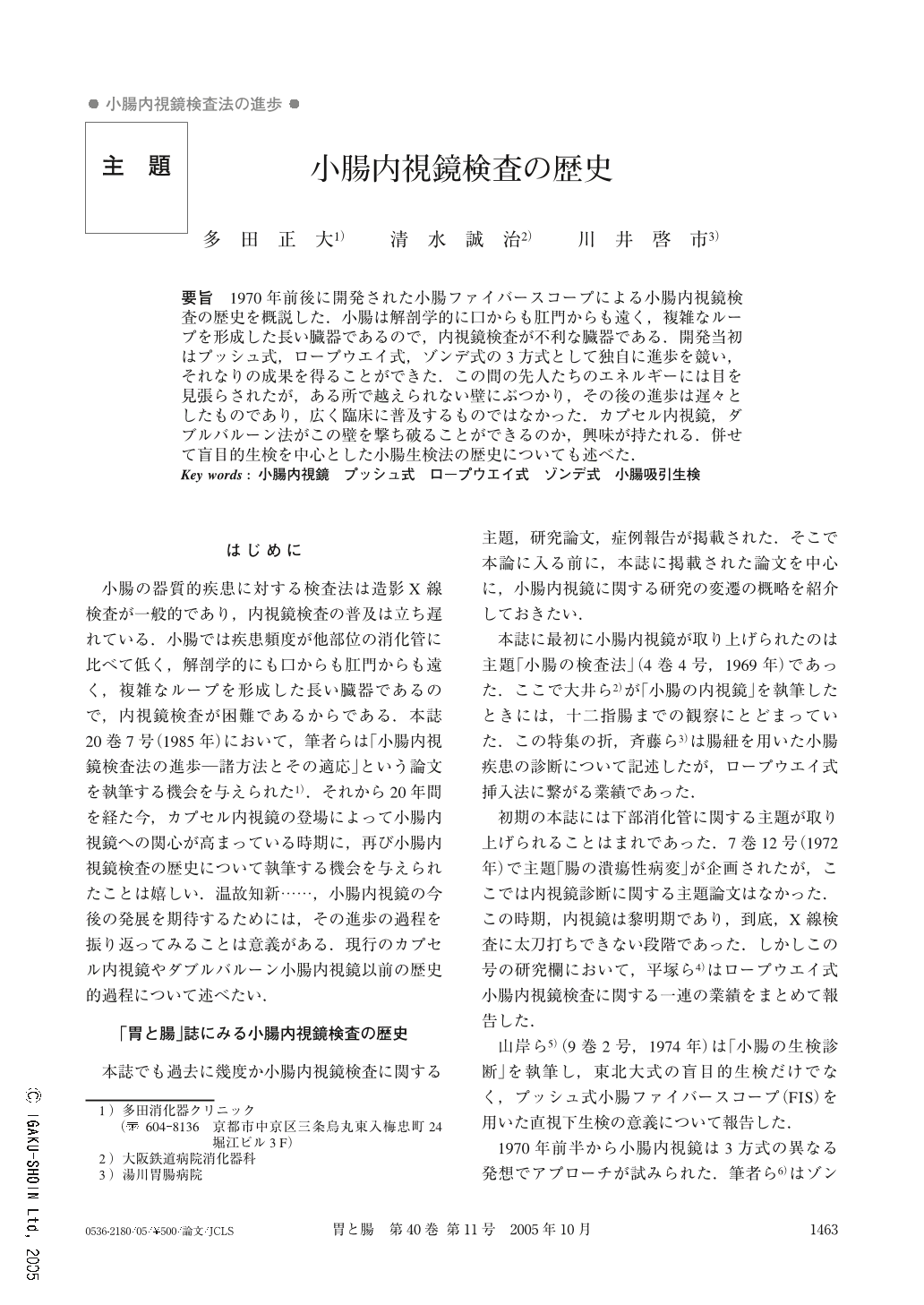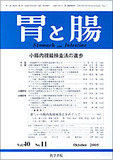Japanese
English
- 有料閲覧
- Abstract 文献概要
- 1ページ目 Look Inside
- 参考文献 Reference
要旨 1970年前後に開発された小腸ファイバースコープによる小腸内視鏡検査の歴史を概説した.小腸は解剖学的に口からも肛門からも遠く,複雑なループを形成した長い臓器であるので,内視鏡検査が不利な臓器である.開発当初はプッシュ式,ロープウエイ式,ゾンデ式の3方式として独自に進歩を競い,それなりの成果を得ることができた.この間の先人たちのエネルギーには目を見張らされたが,ある所で越えられない壁にぶつかり,その後の進歩は遅々としたものであり,広く臨床に普及するものではなかった.カプセル内視鏡,ダブルバルーン法がこの壁を撃ち破ることができるのか,興味が持たれる.併せて盲目的生検を中心とした小腸生検法の歴史についても述べた.
This paper introduces the history of the development of enteroscopy. The small intestine, the so-called “dark continent”, is far both from the mouth and the anus, so endoscopy of the small intestine is difficult, compared to upper GI endoscopy and/or colonoscopy. Since 1970, efforts to observe the small intestine with a fiberoptic endoscope have been initiated by several pioneers.
Up-to-date, small intestinal endoscopy (enteroscopy) has been developed along three main lines (push-type, ropeway-type and sonde-type). Each method has both merits and demerits, but through these devices we can observe sufficiently the small intestinal diseases wherever they arise in the intestine, by using the type of endoscopy that proves to be the most suitable one for the job.

Copyright © 2005, Igaku-Shoin Ltd. All rights reserved.


